Greener getaways: a trip to Melbourne’s Dandenong Ranges
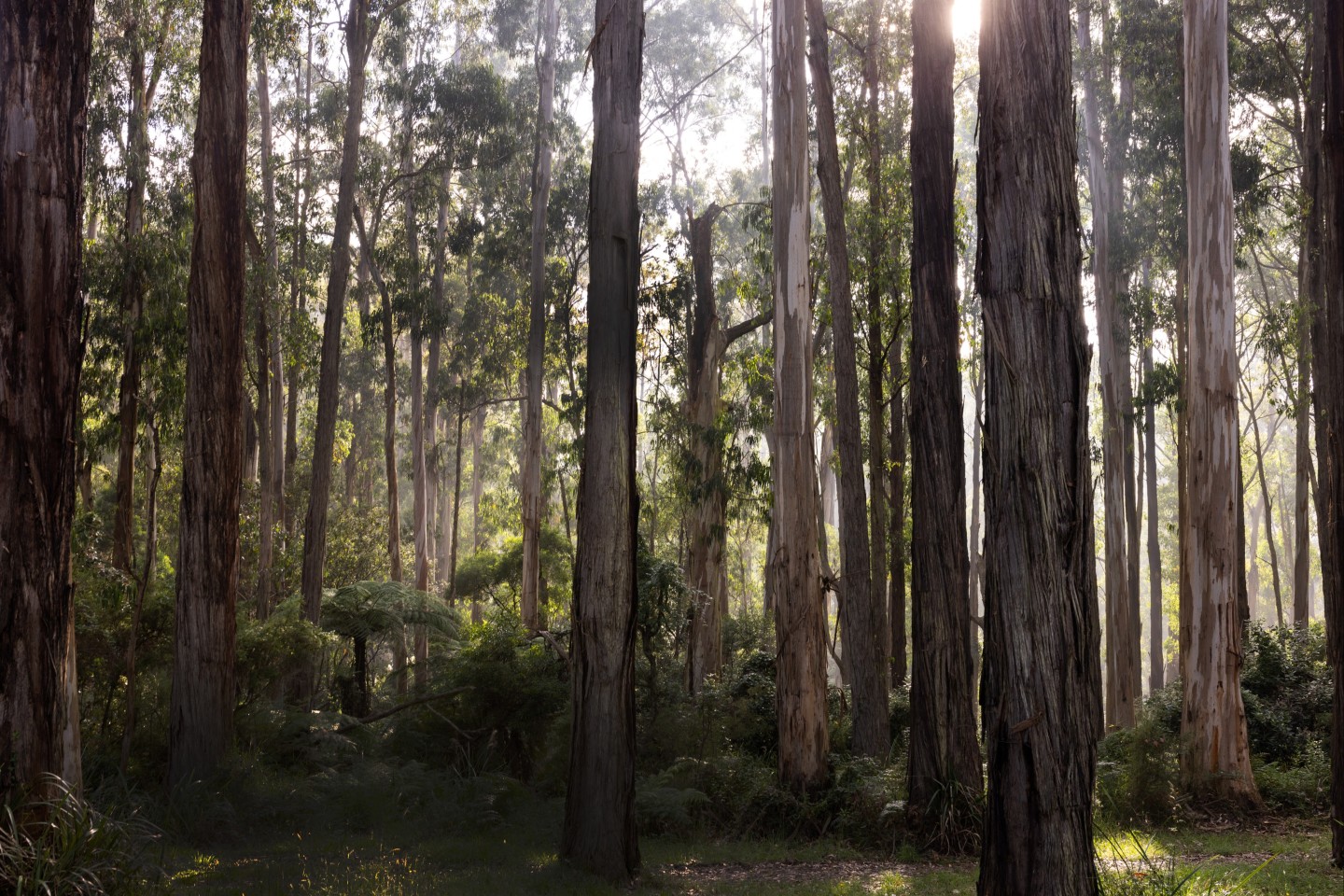
Roula Khalaf, Editor of the FT, selects her favourite stories in this weekly newsletter.
This article is part of a new guide to Melbourne from FT Globetrotter
In late 1850, the severely damaged 808-tonne merchant ship the Admiral arrived in Melbourne disabled by a broken mast. Captain John Freyer, unable to locate adequate timber to repair the ship in the young city, headed to a mountainous region to its south-east and found “a forest of tree masts” that meant the Admiral could return to Britain laden with wool and tallow.
Such legends are commonplace in the early days of settlement, but the joy of the “Mast Gully” tale is that a large tract of the forest which provided that mast still stands.
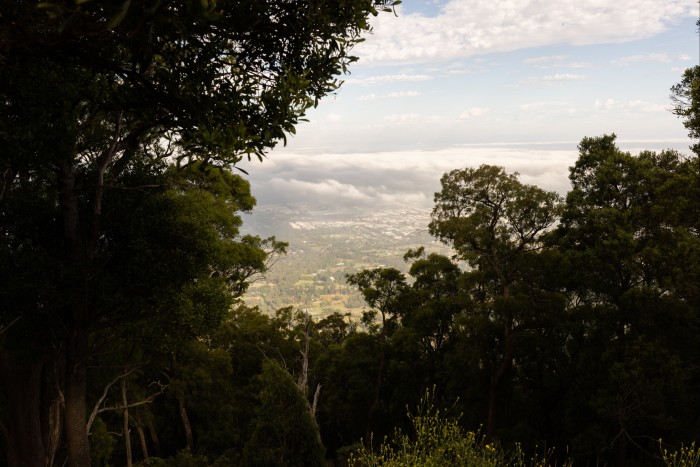
The Dandenong Ranges, a mountainous gateway stretching about 50km between suburbia and wine country, remain sparsely populated and wild. Visitors can get lost — often literally — as the 75m-high mountain ash and 7m-tall tree ferns block out any notion that civilisation is only 40km away.
The density of the forest makes it an ideal spot for hikers, birdwatchers, fans of dangerous hairpin turns and those who need a rest from the frenzy of city life.
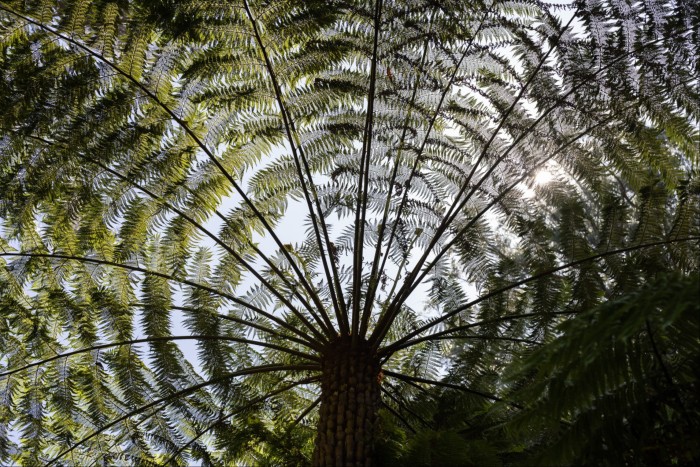
I grew up in the Dandenongs — reputedly a corrupted phrase in the Woiwurung language that means “lofty mountain” — after my parents became besotted with a colonial-style house a friend had put up for sale. It was a rude awakening for a kid born into the endless suburbs that sprawl across Melbourne as I spent my first day in the forest trundling along the tracks of the historic Puffing Billy steam train (see below) that cuts through it. I felt like I’d been dropped into A Midsummer Night’s Dream or, when the sun set and left you stranded in the pitch black while unseen marsupials pounded and hissed around you, the horror movie Predator.
Sydney has the Blue Mountains and Adelaide has its hills region, but the Dandenong Ranges are less well known to international tourists. It has historically been a magnet for day-trippers from Melbourne, who clog up the arterial roads to wine and dine at the tea rooms and tourist traps that have sprung up in the past 30 years to sell them stained glass and bespoke jewellery.
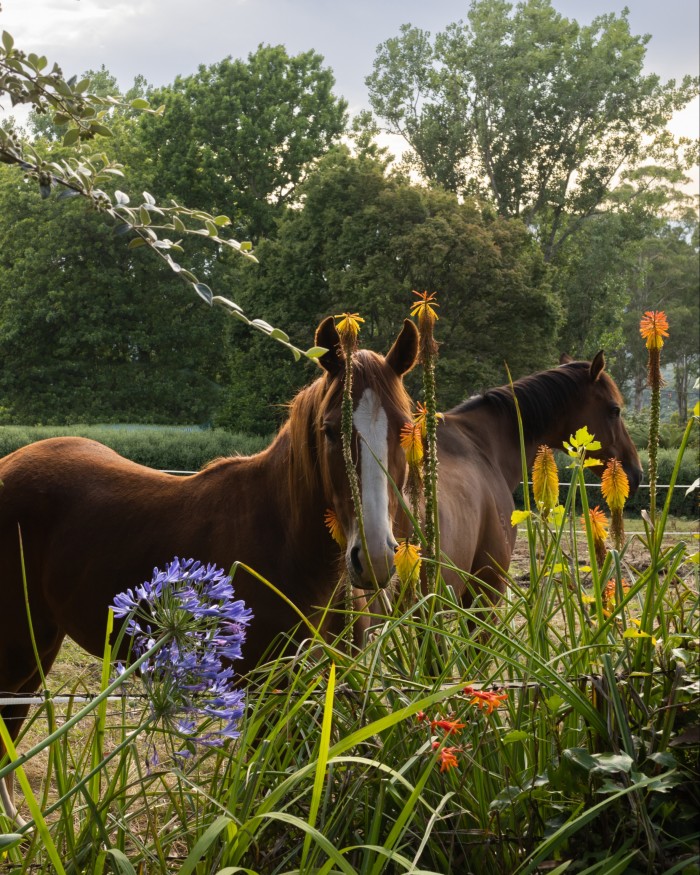
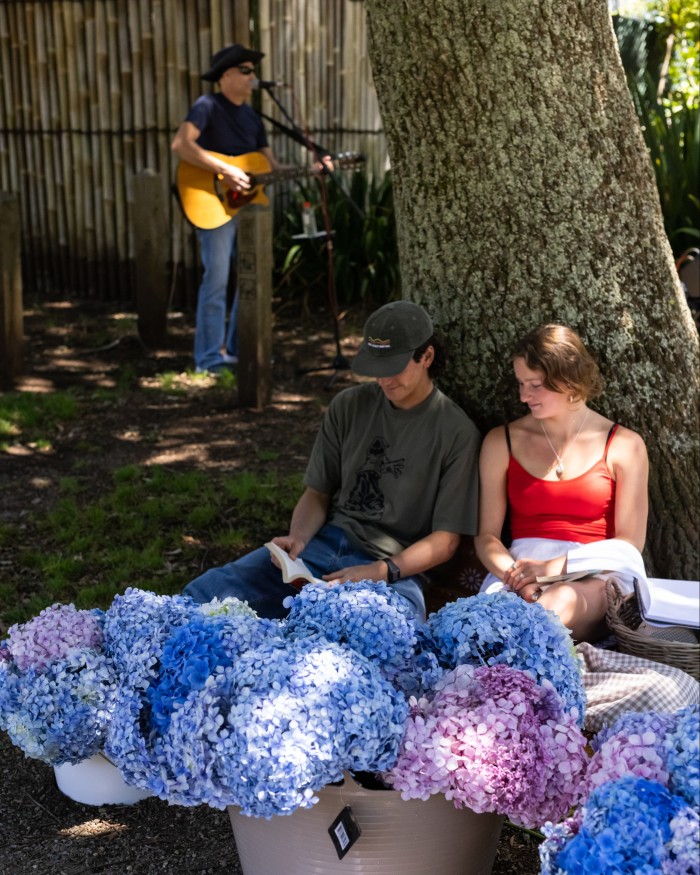
Yet Covid-19 has changed the equation, with more people willing to risk a lengthy commute if they can work from a forest home most of the time. A population that was once made up of farmers, hippies, greenies, bogans (Antipodeans with a predilection for heavy metal and vintage Holden cars) and tradies has become more professional in recent times, as large houses nestled at the end of dirt tracks have become much more desirable.
I spent my adolescence desperately planning to get out of the “hills” but each trip back, first from London and now from Sydney, has revealed how much of my identity is still tied up in the tall trees and eccentric lifestyle.
Visiting is a rewarding experience for those who have the time for a forest hike, a steam-train ride or a drive around roads so bendy that you feel like you are playing Mario Kart. Best to aim for the spring or summer, or autumn for a cooler walk — the hills can get very cold and wet in the winter, but it is the wind and the prospect of giant falling trees (the remnants of which litter the forest) that are the biggest hurdle. Just be careful to set the GPS to specific points in the Dandenong Ranges and not to the nearby conurbation of Dandenong, which is wild but not like the wilderness that towers above it.
How to get there
Car: take the Monash Freeway (M1) to Melbourne’s south-east and turn off at Ferntree Gully Road (Route 22) to the base of the mountains. Alternatively, take the Wellington Road turn-off (Route 18, which becomes C413) for a more pastoral and roadkill-heavy route into the hills. A final non-freeway route to the Mount Dandenong side is via Canterbury Road (Route 32) from Melbourne’s eastern suburbs.
Train: the Belgrave line from central Melbourne stops at Upper Ferntree Gully and Belgrave and takes about an hour. Local buses run infrequently but can be caught from the rail stations to various points.
1,000 Steps
Good for: Cardio, thigh muscles, access to a well-trammelled walk
Not so good for: Tranquillity (when busy), even steps
One of the first stops for many tourists wending their way up the mountains is the 1,000 Steps’ track at the base of the Dandenongs in Upper Ferntree Gully. The trail acts as a de facto exercise circuit for the Lycra-clad and an endurance test for tourists, who are often seen gasping at the rest stops dotted up the climb.
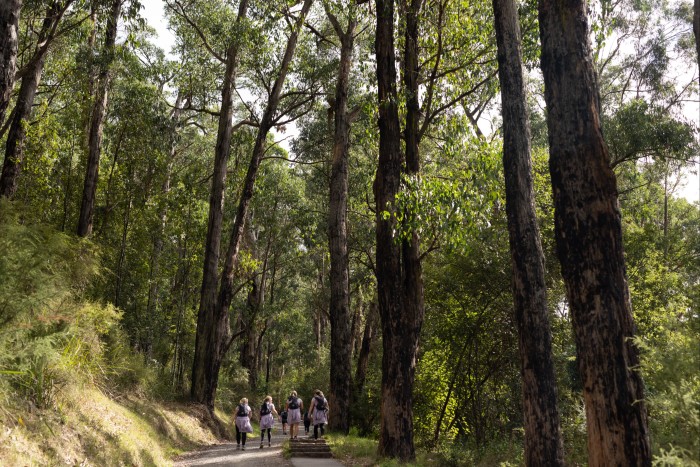
A sign at the base of the steps warns people that “Limbs May Fall”, referring to the possibility of a large branch dropping off a mountain ash on to the path. As I’ve got older and my knee cartilage has thinned, I’ve started to read the sign as “Limbs May Fail”.
The track is a steep 500m climb up Mount Dandenong through lush forest before a steady descent down a wider track. It is not overly arduous but it is not for the infirm, as the uneven, and increasingly erratic, step heights make for a difficult ascent.
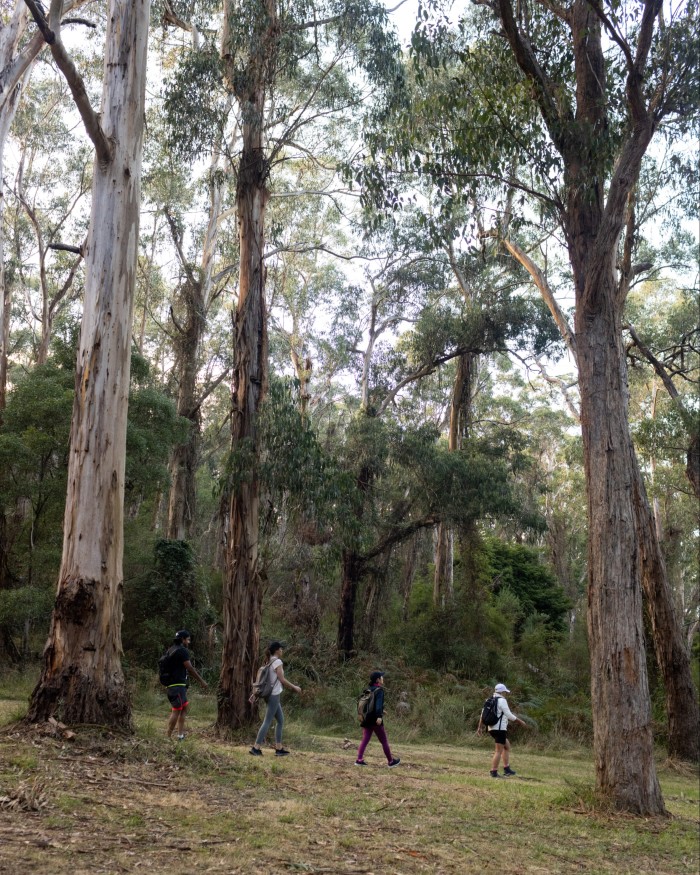
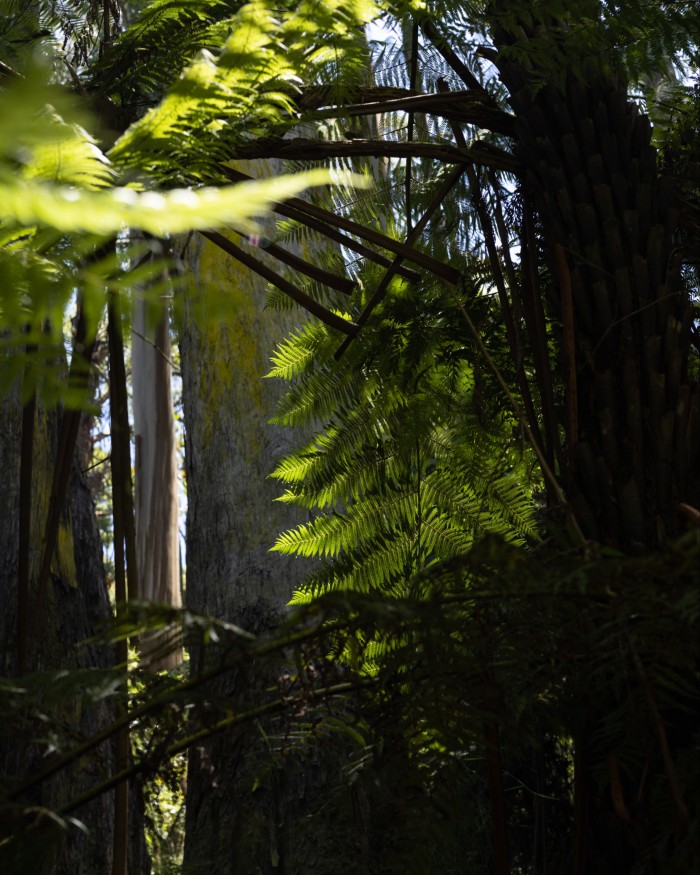
If you’re taking kids up there, it can be fun to get them to count the steps (trade secret: it’s not a thousand), but resist the temptation to loudly play music when climbing up and down the trail lest you irritate everyone around you, including the parrots, kookaburras and echidnas.
The 1,000 Steps forms part of a memorial track commemorating the Australian soldiers who perished fighting in Papua New Guinea during the infamous Kokoda Trail campaign in the second world war. Bronze statues and plaques containing information about the conflict and the co-operation with native Papuans are located along the ascent.
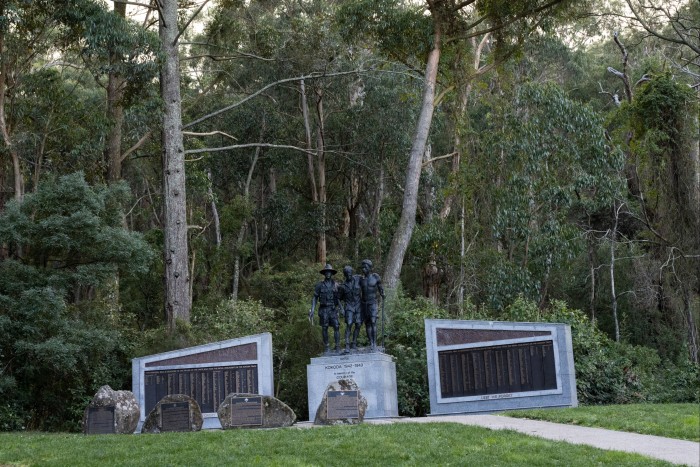
It was trailing up and down the forested 1,000 Steps as a teenager that gave me a Teutonic-like desire to climb mounds, hills, volcanoes and mountains whenever I was within their vicinity. That culminated in a somewhat reckless midnight trek up to the apex of Santa Cruz in the Andes, which dwarf the Dandenongs more than tenfold in height.
If you’re put off by the procession of hikers heading up the steps, or want a tougher challenge, head to the Montrose Fire Trail on the other side of the mountain range. The ascent is 600m straight up and involves climbing over ground resembling a dried-out creek bed rather than a path. Care should be taken traversing the large rocky parts of the trail, but the steep climb is well worth it once you hit Burke’s Lookout, which on a clear day offers views over Melbourne and the bay.
How to get there
1,000 Steps: Mount Dandenong Tourist Road just off Burwood Highway (Route 26) at Upper Ferntree Gully.
Montrose Fire Trail: Glasgow Road/Sheffield Road off Mount Dandenong Tourist Road at the Canterbury Road (Route 32) end.
Sassafras and Olinda
Good for: Day-tripping, high teas, hairpin turns
Not so good for: Parking, hairpin turns
Most day-trippers and tourists who visit the Dandenongs will end up visiting the villages of Sassafras, Olinda or Kallista when driving around the hills. Clusters of fashion boutiques, selling everything from womenswear to possum socks, sit aside antiques shops, idiosyncratic arts and crafts stores and cafés that draw tourists like flies.
There is a strange stylistic inconsistency around these parts, where Tudor-style tea rooms that specialise in quaint “Devonshire” (not Cornish) cream teas sit around the corner from Bavarian-themed cake emporiums and modern cafés focused on sustainable and vegetarian fare.
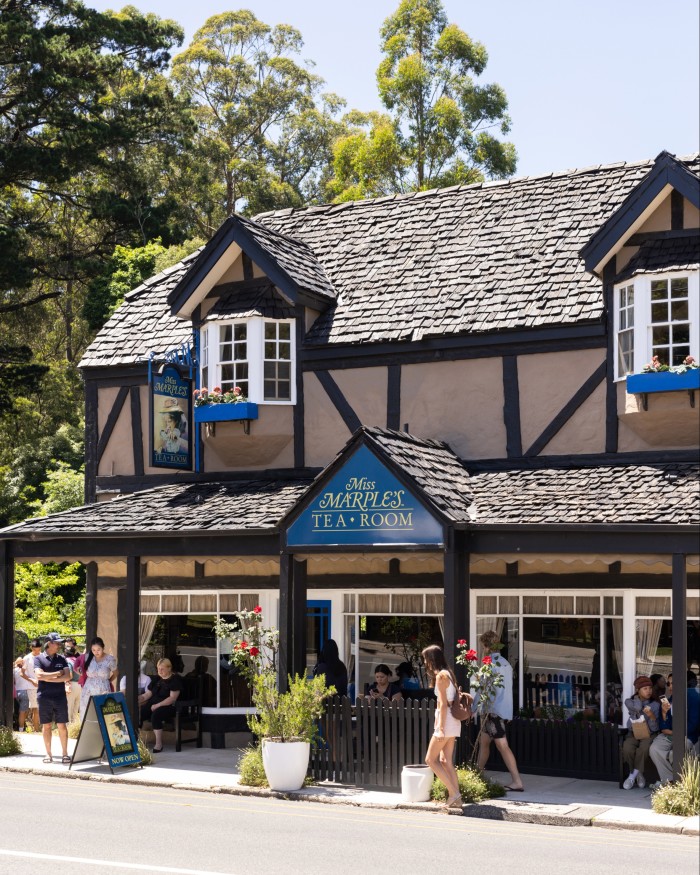
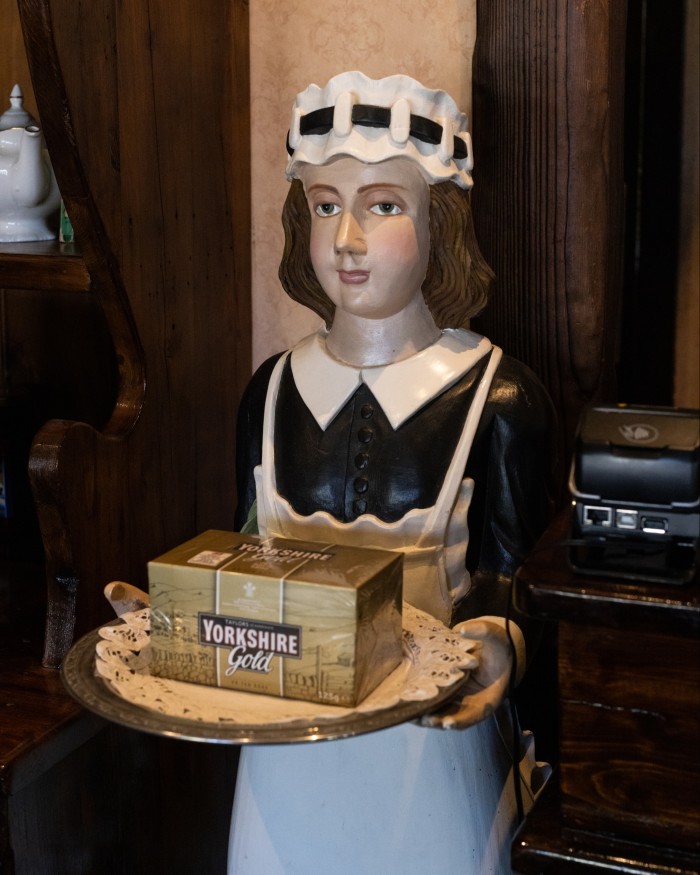
The best picks include Ripe in Sassafras (located next to the distinctive tea shop where I buy “billy tea” leaves), which has become an institution since it opened in 1999. Specialising in local produce and with little of the fuss or faux-grandeur of larger places, Ripe (open 8am–3pm Mon–Fri; 8am–4pm Sat–Sun) is a great place for either a meal (the oblong veggie burger or grilled barramundi fillet are recommended) or a cake and coffee (I’d go for the arty flourless orange cake over the hemp seed bar), but it might be best to book as it is often busy.

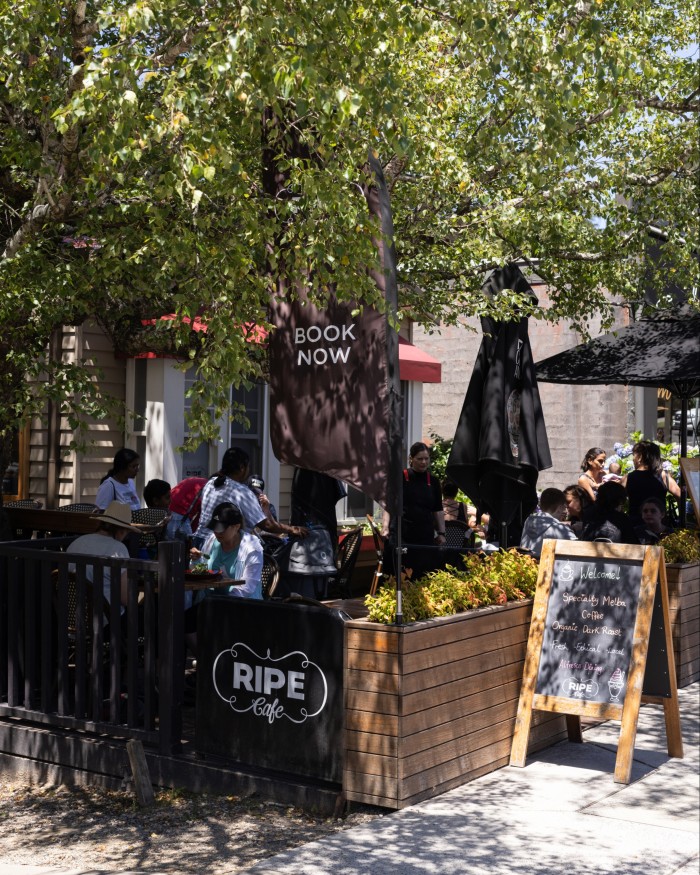
Proserpina Bakehouse, located back down the hill in the quieter Ferny Creek, is a newish addition to the Dandenongs culinary scene and does a roaring trade. The large space operates as a bustling café offering fancy cakes, gourmet pizzas, tarts and pasties using flour it has milled on site. The bakehouse (open 7am–4pm Weds–Mon) also operates as a delicatessen, selling wines from the nearby Yarra Ranges as well as condiments, cheeses and meats, albeit at steep prices. The staff are incredibly friendly, which helps offset some of the chaos of the unruly queues during its busiest times.
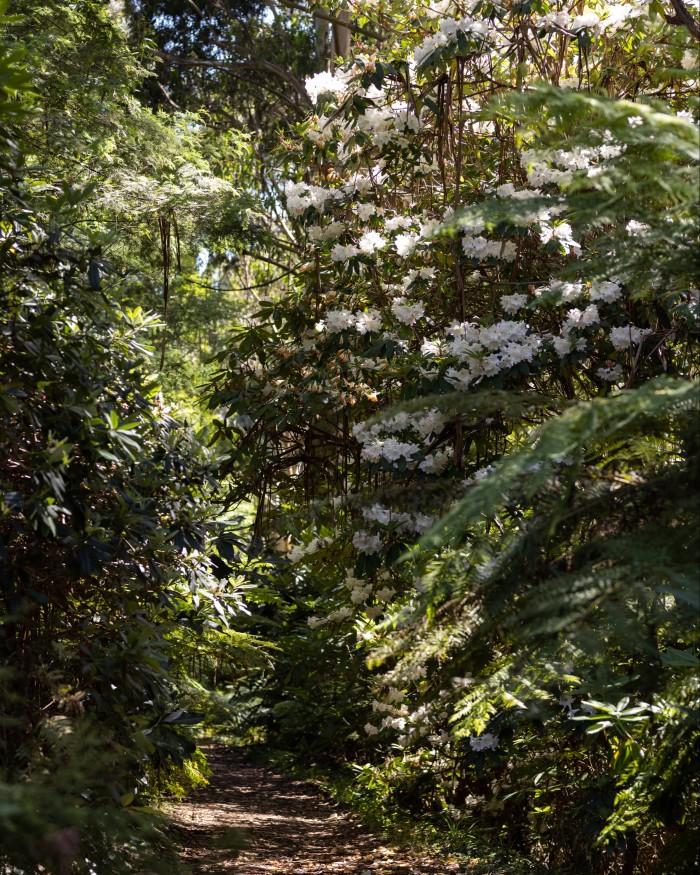
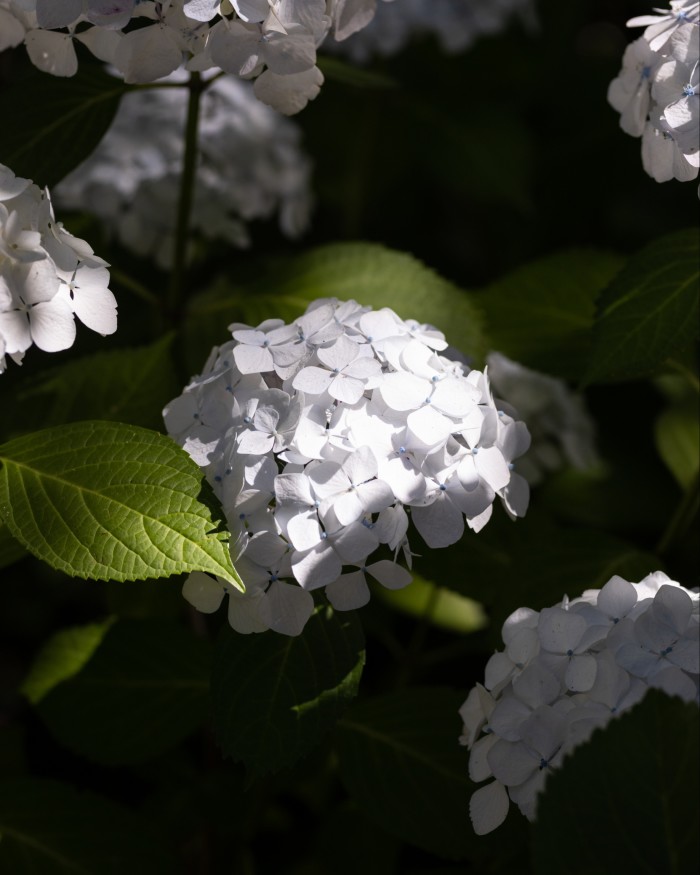
Olinda and Sassafras are good jumping-off points for forest hikes or visits to one of the many gardens in the region. The pick is the National Rhododendron Gardens, recently rebranded as the Dandenong Ranges Botanic Garden, which is set across 40 hectares and offers views over the Yarra Ranges wine country. Although the key floral attraction is the rhododendrons on display, as well as azaleas and camellias (peak times September and October), the gardens are wilder than you might expect and you’re never far from a view of an imposing mountain. I got hitched here, so it feels like a pretty special place.
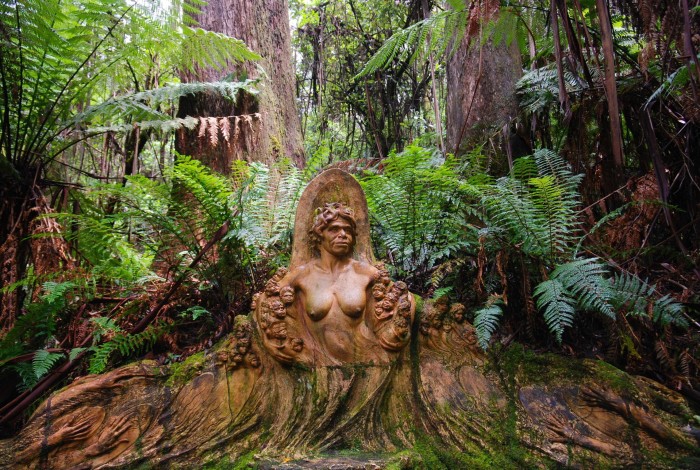
That said, the real star of the Dandenong Ranges is the William Ricketts Sanctuary. The sculpture park, situated in a glade on Mount Dandenong, offers a tranquil walk through fern-lined forest paths and exhibits the work of Ricketts, who focused much of his work on Aboriginal spirituality. There are 92 beautiful pieces dotted around the pathways, as well as a small gallery. The audio tour is recommended to learn more about his vision. Sadly, the site was damaged by a severe storm — a regular occurrence in the Dandenongs — and is unlikely to reopen until 2024.
How to get there
Mount Dandenong Tourist Road (Route 26) provides access to all these sites.
Lyrebirds/deep forest
Good for: Tall trees, dense forest hikes, wildlife
Not so good for: Watch carefully for spider’s skein when in the forest lest you get a faceful of cobweb, as well as its agitated resident
FYI: bring binoculars
I once had the pleasure of meeting Sir David Attenborough at a press function and told him that I was from the same forest as the superb lyrebird, which he had featured in his 1998 TV series The Life of Birds. Memories of the footage, filmed in the Dandenongs, of a male lyrebird performing note-perfect mimicry of other bird songs, car alarms and chainsaws enlivened Attenborough, who recalled the forest as well as the nearby Micawber Tavern pub in our brief discussion.
The clip remains popular online, and the lyrebird went viral once again last year when a captive one in Sydney imitated an evacuation drill.
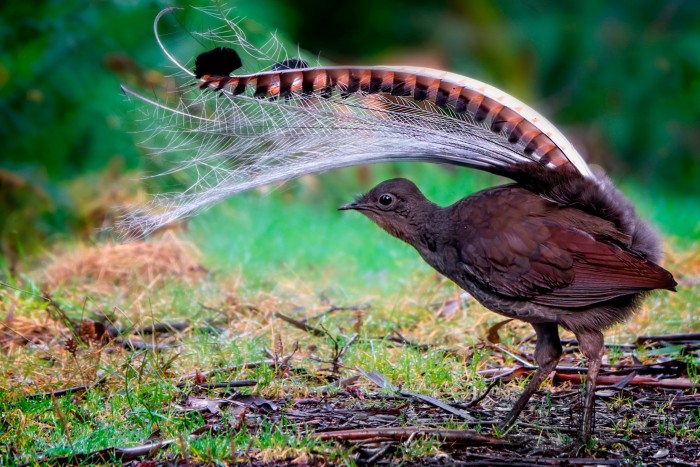
The ancient bird, which appears on Australian 10c coins, takes its name from the male’s lyre-shaped tail rather than its ability to mislead predators about its identity. It is not as hard to spot as it once was in the Dandenongs, when predation by cats, dogs and foxes pushed it to the brink in the 1980s. Numbers have recovered due to conservation efforts. Venturing deep into the forest where they like to fossick for food in the damp fern gullies is the best bet if you want to see one.
There are a large number of substantial hikes through the Dandenongs that will take visitors into the wilderness where echidnas, wallabies and wombats also reside. The deeper you go in, the closer you will get to patches of cool temperate rainforest that have covered the region for 60mn years. Although bushfires have ravaged the forest on occasion, some of the tallest mountain ash trees in the remote gullies — which can grow to a height of over 100m — are now up to 250 years old.
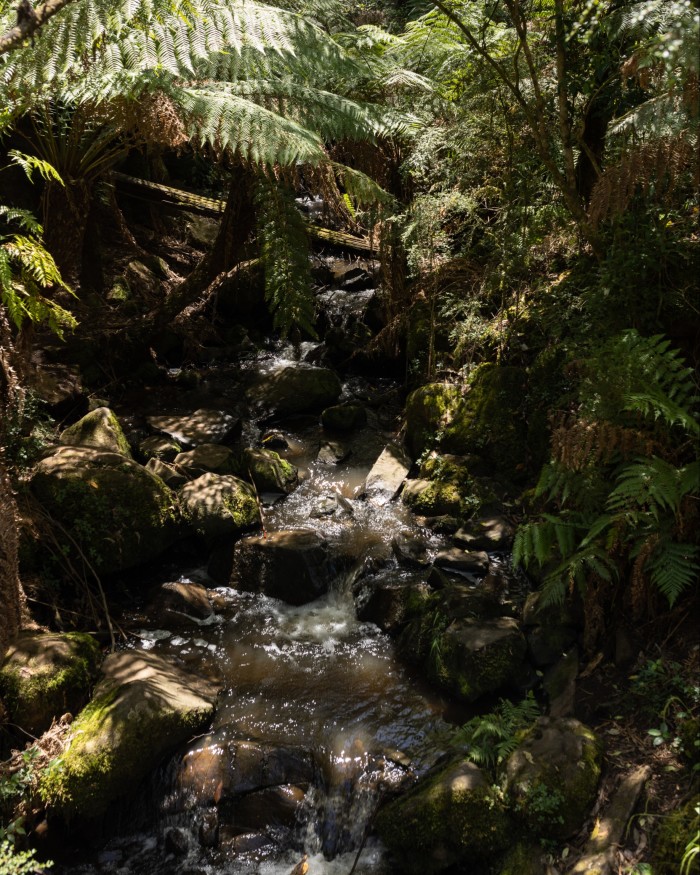
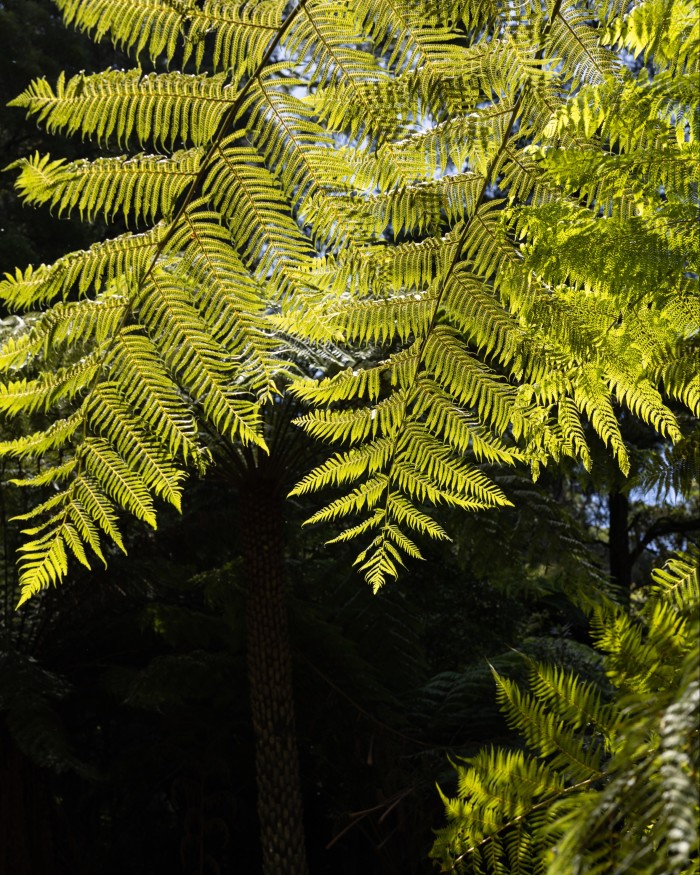
Walks are well signposted as long as you stay on the marked trails, and the car parks on each site have detailed maps on display for peace of mind and in case the patchy phone reception spooks you.
The best short walk in the area is arguably the Sherbrooke Falls trek — a mostly flat 2.4km loop around a small cascade that is pleasant but no Niagara. It offers an easy entry into the forest without the need to scale large hills and can be completed in less than an hour. It is accessible from Sherbrooke Road between Kallista and Ferny Creek, which is bordered by mountain ash and makes for an excellent drive.
A longer and more intense walk is the 7km Eastern Sherbrooke Forest Walk, which incorporates a number of trails and involves, predictably, some tough ascents. It is best to start at Grants Picnic Ground in Kallista on Monbulk Road (C404), and follow the signs for the Lyrebird Track. Take the dense Hardy Gully Track and eventually you will end up on the Neuman Track, which you can follow around to eventually get back to Grants. The Paddy Track detour will take you to Selby, my hometown, and to the magnificent wooden Trestle Bridge where you can watch the local steam train (see below) hoot by if you time it right.
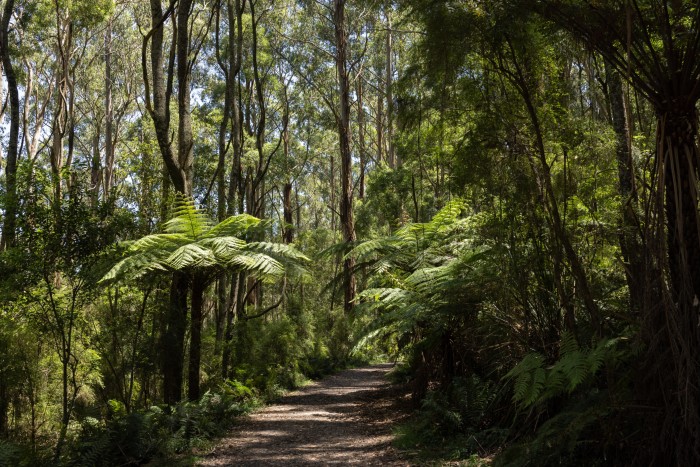
These are some of the most beautiful walks in the area, where wide paths give way to clearings containing dead trees that look like modern sculptures before turning back into the deepest forest. It is easy to get lost — it is common to be asked by bug-eyed tourists for the quickest way back to the car park — but the signs will guide you back to Grants at regular intervals, even if you’ve taken a wrong turn.
Just don’t ask any of the birds for directions — some of them are lyres.
Puffing Billy
1 Old Monbulk Road, Belgrave VIC 3160
Good for: Kids, train enthusiasts, history, Dandenongs without the hiking
Not so good for: Those in a hurry
FYI: Check if it is running if it’s very hot, as the train won’t run if the fire rating is “extreme”
If you ask most people what they associate with the Dandenong Ranges, it will probably be the Puffing Billy steam train that chugs its way through the forest and is a regular trip for schoolchildren across Melbourne.
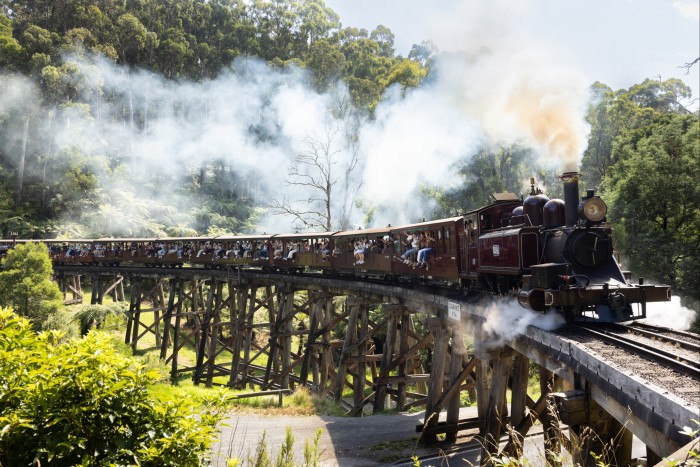
I had a more direct relationship with the train as it passed directly through my fenceless garden, meaning that tourists hanging their legs and arms out of the open sides of the train’s carriages would often spot me and wave excitedly at the local hillbilly. Novelty soon turned to irritation, so my brother and I, during our ratbag years, became quite skilled at hitting tourists with eggs as they slowly passed, unable to dodge the ovoid projectiles.
It was with some irony, then, that my first official ride on the train (I’d jumped on to the back of the last carriage for a free ride a few times) was for my wedding reception when, having spent a decade away in London, the novelty of travelling through the hills on a steam train had a strange appeal. Luckily, my suit was covered only in soot the next day and not egg yolk.
The narrow-gauge train line was originally established as a freight line in 1900 used to haul timber, fruit trees and potatoes from the region down into Melbourne, with meat, milk, mail on board. It operated until the 1950s, when a landslide buried the track and ended its life as an operating line.
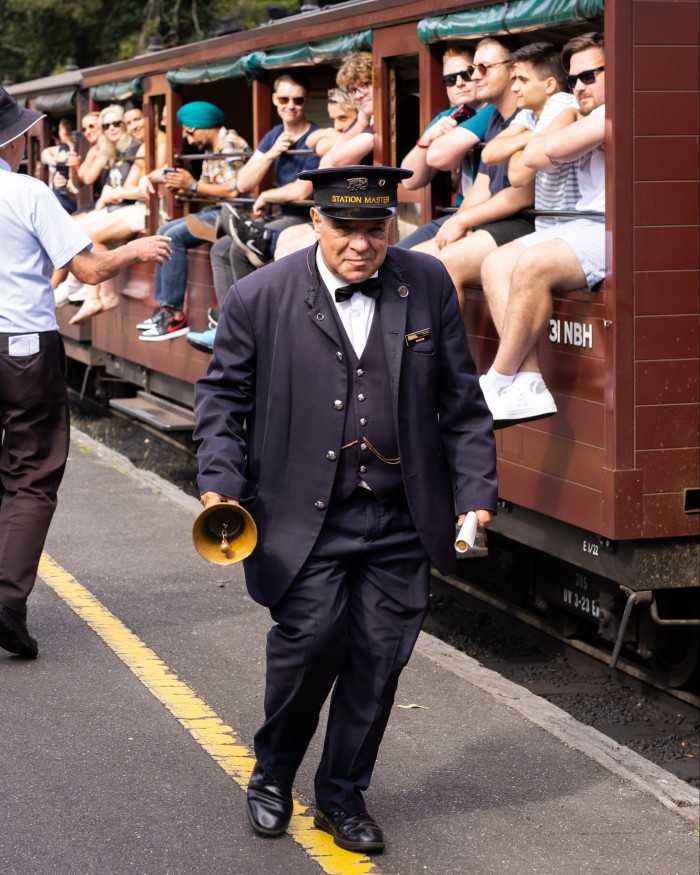
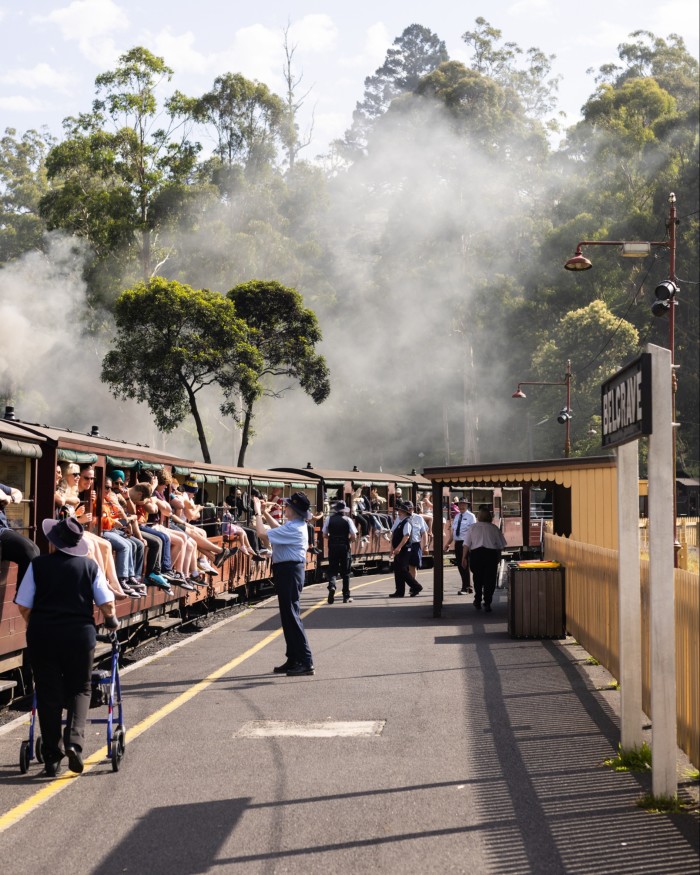
However, the affection that the public had for Puffing Billy — named after an older steam train located in a colliery near Newcastle upon Tyne — saved it as thousands of children turned up for one last ride on the beloved train, which thus proved its worth as a tourist attraction. The line was gradually restored by volunteers between the 1960s and 1990s to span 24km.
Its appeal goes beyond steam-train enthusiasts like Michael Portillo, who featured the railway line on his BBC television series, due to the beauty of the surroundings. The most frequent route from Belgrave to Emerald Lake passes over Trestle Bridge and through the forest and rests at a park where there is a children’s paddling pool and pedalos, as well as a newly built museum and café complex. It is roughly a three-hour round trip and costs A$61 per adult ticket or A$153 for a family ticket.
The train offers an easy way for people to experience the Dandenongs without the need for a car as Belgrave is connected to the metropolitan rail network.
How to get there
Car: Belgrave via Burwood Highway (Route 26). Train: Belgrave line from central Melbourne, which takes over an hour.
Do you have a favourite Melbourne getaway? Tell us in the comments
Follow FT Globetrotter on Instagram at @FTGlobetrotter
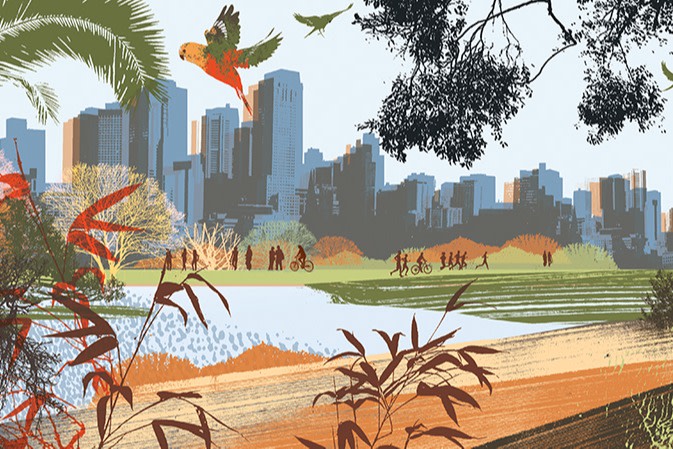
Comments